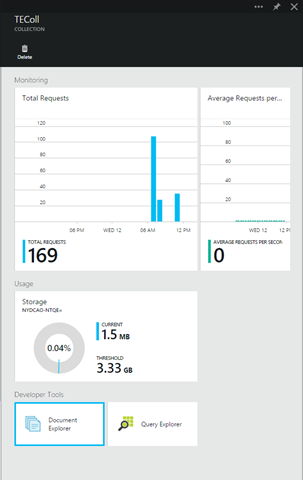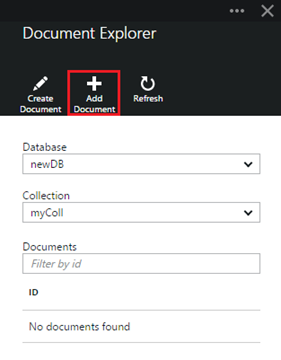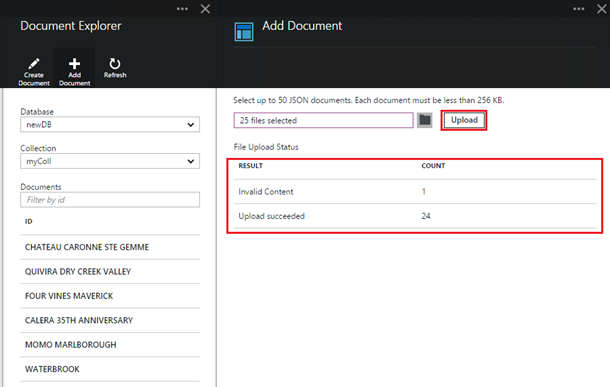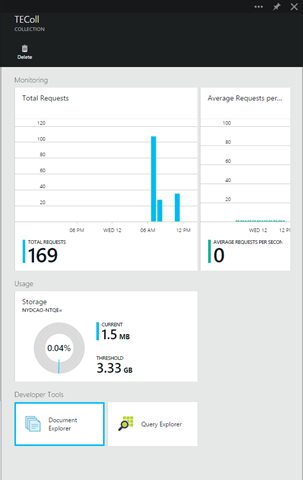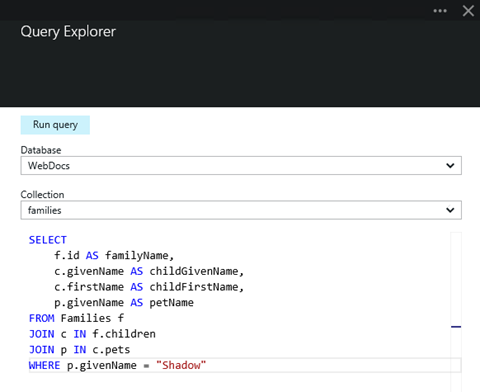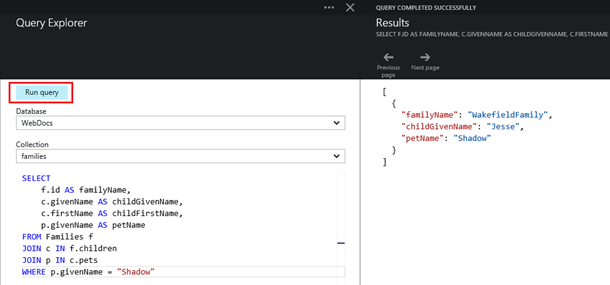Bulk Add Documents and Query Syntax Highlighting
We’ve released a couple of great improvements to further enhance the management experience for DocumentDB, the fully managed NoSQL document database service on Azure. We just released the following capabilities in the new Azure portal at https://portal.azure.com:
- Bulk add Documents – Upload multiple existing JSON documents via Document Explorer
- Query syntax highlighting – Keyword and value highlighting in Query Explorer
- Improved query experience – Edit and re-execute queries without closing the results blade
Keep reading for additional information on each of these new features or get started now with DocumentDB
Add Documents
Document Explorer allows you to easily create, edit, and delete JSON documents stored in DocumentDB and is available from any of the DocumentDB account, database or collection blades:
With this release, Document Explorer now supports upload of multiple existing JSON documents. Simply open Document Explorer from any of the aforementioned blades and click the “Add Document” command:
A new blade will open. Click the browse button to open a file explorer window and select 1 or more JSON documents to upload. Note that Document Explorer currently supports up to 50 JSON documents per upload operation:
Once you’re satisfied with your selection, click the upload button. The documents will automatically be added to the Document Explorer grid and results will be displayed as the upload operation progresses:
Once the operation has completed, you can select up to another 50 documents to upload.
Query Explorer – Syntax Highlighting
Query Explorer allows you to author, edit, and run DocumentDB SQL queries against any of your DocumentDB collections. Similar to Document Explorer, Query Explorer is available from any of the DocumentDB account, database, and collection blades:
In this release, we’ve enabled basic keyword and value highlighting within Query Explorer to improve the query authoring experience :
Query Explorer – Rerun queries
Finally, we’ve modified the Query Explorer blade so that you can run, edit and re-run queries without having to close the results blade:
As always, we’d love to hear from you about the DocumentDB features and experiences you would find most valuable within the Azure portal.
Please submit your suggestions on the Microsoft Azure DocumentDB feedback forum.
If you haven’t tried DocumentDB yet, then get started here.
Enjoy!
Stephen Baron
Program Manager
Comments
Anonymous
November 13, 2014
I converted from Raven DB to DocDB and so far its pretty cool. Still need orderby and a few things but almost there.Anonymous
November 14, 2014
Thanks for the feedback! We have loads of cool things planned for DocumentDB, including things like Order By. Stay tuned for more from us.Anonymous
December 26, 2014
This is great! Hopefully point-in-time backup & restore option will be added similar to SQL Azure.Anonymous
January 16, 2015
I hope you also implement the First() and FirstOrDefault() queries in SQL so you don't have to download the entire result by calling AsEnumerable()Anonymous
January 20, 2015
@Ramesh, yes, point-in-time backup & restore has been one of our highly requested features. To add your support for the feature, please vote for it on feedback.azure.com/.../6331712-backup-solution-for-documentdb so that we can prioritize feature asks.Anonymous
January 20, 2015
@Graham we will be adding TOP at some point after we've added Order By. That will then allow you to do TOP(1) etc. For now, I would suggest using the WHERE clause to narrow your resultset on the server.Anonymous
March 02, 2015
How to update existing document?Anonymous
March 03, 2015
@Matonen you can do this in the Document Explorer. Find the document and in the blade with the JSON, just edit the document inline and hit save.Anonymous
April 14, 2015
With the "Add Document" can we only add one document per JSON file?Anonymous
May 17, 2015
@Bart, add document lets you add up to 100 JSON documents at a time. There is also an import tool which allows you to import from JSON data, CSV files, MongoDB, SQL, Azure Table and more. See azure.microsoft.com/.../documentdb-import-data
